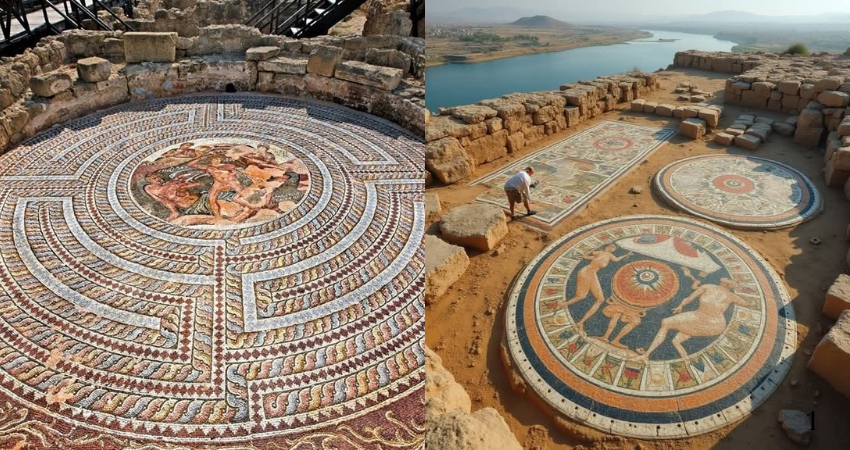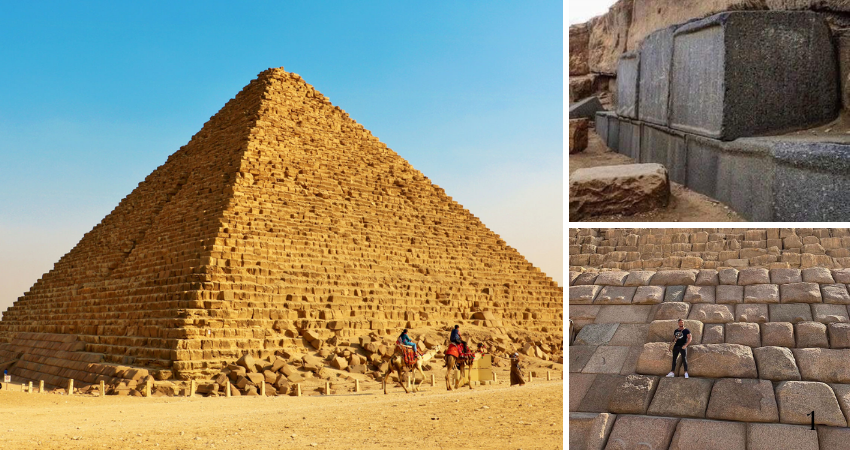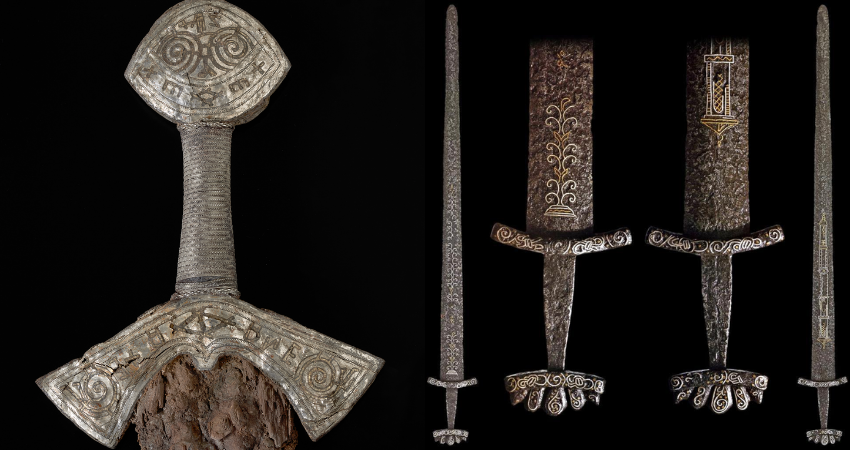A Northern California couple out walking their dog in February 2013 on their Gold Country property stumbled across a modern-day bonanza: $10million in rare, mint-condition gold coins buried in the shadow of an old tree.
Nearly all of the 1,427 coins, dating from 1847 to 1894, are in uncirculated, mint condition, said David Hall, co-founder of Professional Coin Grading Service of Santa Ana, which recently authenticated them.
Although the face value of the gold pieces only adds up to about $27,000, some of them are so rare that coin experts say they could fetch nearly $1million apiece.
Experts say it’s likely whoever owned the property 150 years ago buried the coins as a kind of California gold rush-era bank – to save as an investment and for a rainy day. The coins were then forgotten for over a century.
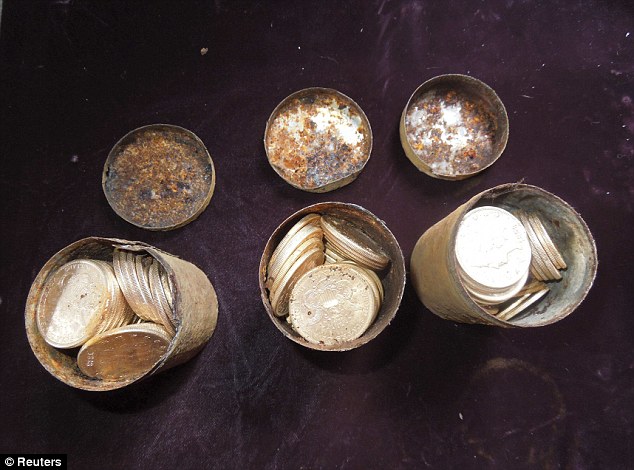
Booty: A trove of rare Gold Rush-era coins unearthed in California last year by a couple as they walked their dog may be the greatest buried treasure ever found in the United States, worth more than $10million
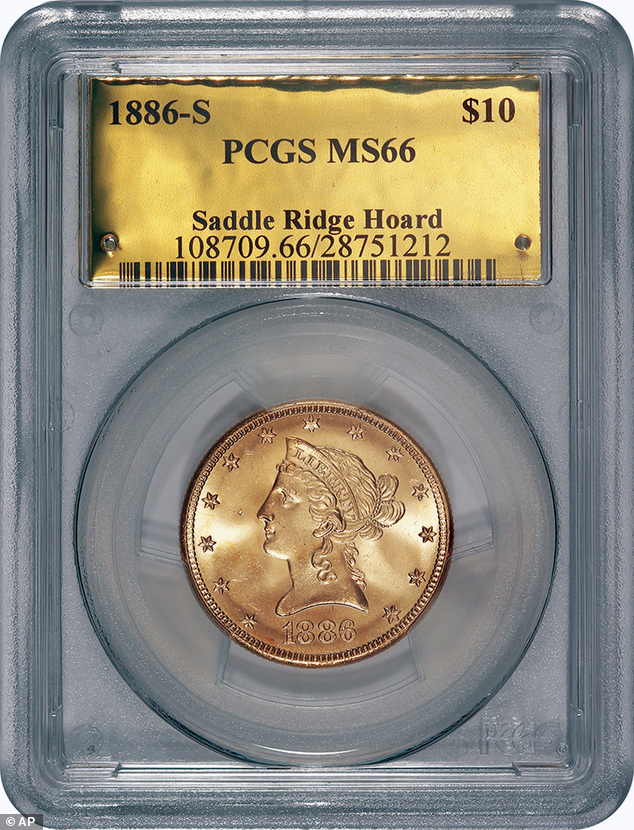
One of the 1800s-era U.S. gold coins unearthed in California by two people who want to remain anonymous. The value of the “Saddle Ridge Hoard” treasure trove is estimated at $10 million or more


Show and tell: David Hall (left), co-founder of Professional Coin Grading Service, poses with some of 1,427 Gold-Rush era U.S. gold coins, at his office in Santa Ana
‘I don’t like to say once-in-a-lifetime for anything, but you don’t get an opportunity to handle this kind of material, a treasure like this, ever,’ said veteran numismatist Don Kagin, who is representing the finders. ‘It’s like they found the pot of gold at the end of the rainbow.’
Kagin, whose family has been in the rare-coin business for 81 years, would say little about the couple other than that they are husband and wife, are middle-aged and have lived for several years on the rural property where the coins were found. He first met the couple last April.
They have no idea who put the the coins there, he said.
The pair are choosing to remain anonymous, Kagin said, in part to avoid a renewed gold rush to their property by modern-day prospectors armed with metal detectors.
However, Kagin’s company posted a brief question and answer interview with the couple – identified only as John and Mary – on a website set up to market the coins.
Mary revealed that the discovery of the coins was foretold by her astrological chart – through she didn’t realize it at the time.
‘I did look back at it. It’s very funny, my chart did talk about treasure, but it was more about the treasure of spirit….’ she said.
She added: ‘I never would have thought we would have found something like this; however, in a weird way I feel like I have been preparing my whole life for it.

Precious exhibits: Some of 1,427 Gold-Rush era U.S. gold coins are displayed at Professional Coin Grading Service in Santa Ana, Calif.

Most of the coins were minted in San Francisco, but one $5 gold piece came from as far away as Georgia

California Gold Country: Near the center of the map is Sutter’s Mill, the site of the 1848 find that started the Gold Rush. Hopeful prospectors flocked to the area east of Sacramento to the Nevada line and down through much of the Sierra Nevada range
‘John just knew what to do – it was a little bit karmic… Perhaps in some way we were the ones that could honor the coins.’
John and Mary are a self-employed couple in their 40s.
‘The family and the attorneys researched who might have put them there, and they came up with nothing,’ Kagin said.
‘The nearest we can guess is that whoever left the coins might have been involved in the mining industry.’
They also don’t want to be treated any differently, said David McCarthy, chief numismatist for Kagin Inc. of Tiburon.
‘Their concern was this would change the way everyone else would look at them, and they’re pretty happy with the lifestyle they have today,’ he said.
They plan to put most of the coins up for sale through Amazon while holding onto a few keepsakes. They’ll use the money to pay off bills and quietly donate to local charities, Kagin said.
Before they sell them, they are loaning some to the American Numismatic ᴀssociation for its National Money Show, which opens Thursday in Atlanta.

This image shows one of the six decaying metal canisters filled with 1800s-era U.S. gold coins unearthed under the shade of a tree

Lucky find: A can containing 19th century gold coins is shown in the ground
What makes their find particularly valuable, McCarthy said, is that almost all of the coins are in near-perfect condition. That means that whoever put them into the ground likely socked them away as soon as they were put into circulation.
Because paper money was illegal in California until the 1870s, he added, it’s extremely rare to find any coins from before that of such high quality.
‘It wasn’t really until the 1880s that you start seeing coins struck in California that were kept in real high grades of preservation,’ he said.
The coins, in $5, $10 and $20 denominations, were stored more or less in chronological order, McCarthy said, with the 1840s and 1850s pieces going into one canister until it was filed, then new coins going into the next one and the next one after that.
The dates and the method indicated that whoever put them there was using the ground as their personal bank and that they weren’t swooped up all at once in a robbery.
Although most of the coins were minted in San Francisco, one $5 gold piece came from as far away as Georgia.

The coins were store chronologically, with the 1840s and 1850s pieces going into one canister until it was filed, then new coins going into the next one and the next one after that. The dates and the method indicated that whoever put them there was using the ground as their personal bank
Kagin and McCarthy would say little about the couple’s property or its ownership history, other than it’s in a sprawling hilly area of Gold Country and the coins were found along a path the couple had walked for years.
On the day they found them last spring, the woman had bent over to examine an old rusty can that erosion had caused to pop slightly out of the ground.
They found eight cans in total.
‘Don’t be above bending over to check on a rusty can,’ he said she told him.
They are located on a section of the property the couple nicknamed Saddle Ridge, and Kagin is calling the find the Saddle Ridge Hoard. He believes it could be the largest such discovery in U.S. history.
One of the largest previous finds of gold coins was $1million worth uncovered by construction workers in Jackson, Tennessee, in 1985. More than 400,000 silver dollars were found in the home of a Reno, Nevada, man who died in 1974 and were later sold intact for $7.3million.
Gold coins and ingots said to be worth as much as $130million were recovered in the 1980s from the wreck of the SS Central America. But historians knew roughly where that gold was because the ship went down off the coast of North Carolina during a hurricane in 1857.
